#Maria Antonia of the Two Sicilies
Explore tagged Tumblr posts
Text

Maria Antonia of Naples and Sicily, Princess of Asturias.
#Maria Antonia of Naples and Sicily#18th century#18th century art#princess of asturias#house of bourbon two sicilies#long live the queue
92 notes
·
View notes
Text








florence + the machine lyrics x colors x textiles in art — blue
Rabbit Heart (Raise It Up) – Lungs // Young Woman in an Armchair – unknown artist 🌊 Swimming – Lungs // Portrait of a Woman in a Blue Dress – unknown artist 🌊 No Light, No Light – Ceremonials // Elisabeth Rachel Félix – Edmond Geffroy 🌊 Spectrum – Ceremonials // Portrait of Maria Christina of the Two Sicilies – Vincente López Portaña 🌊 Bedroom Hymns – Ceremonials // Portrait of Isabella II of Spain – Federico de Madrazo y Kuntz 🌊 What Kind of Man – How Big, How Blue, How Beautiful // Lady in a Blue Dress – Franz Eybl 🌊 How Big, How Blue, How Beautiful – How Big, How Blue, How Beautiful // The Infanta Isabel of Bourbon – Vincente Palmaroli 🌊 Make Up Your Mind, How Big, How Blue, How Beautiful // Portrait of Princess Maria Antonia of Naples and Sicily – Vincente López Portaña
#florence + the machine lyrics x colors x textiles in art#blue#rabbit heart#swimming#no light no light#spectrum#bedroom hymns#what kind of man#how big how blue how beautiful#make up your mind#lungs#lungs album#ceremonials#hbhbhb#florence + the machine#florence and the machine#fatm#art#art history#lyrics#lyric art
330 notes
·
View notes
Photo



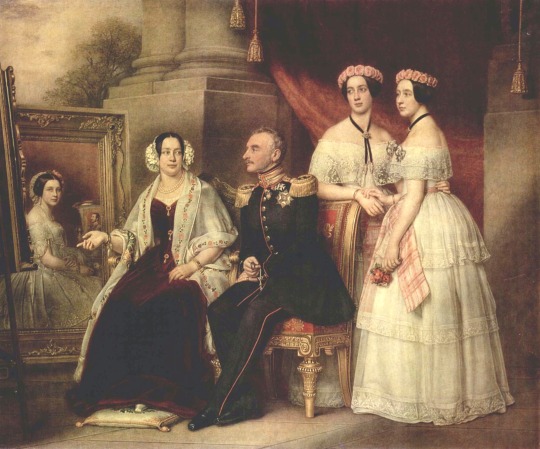



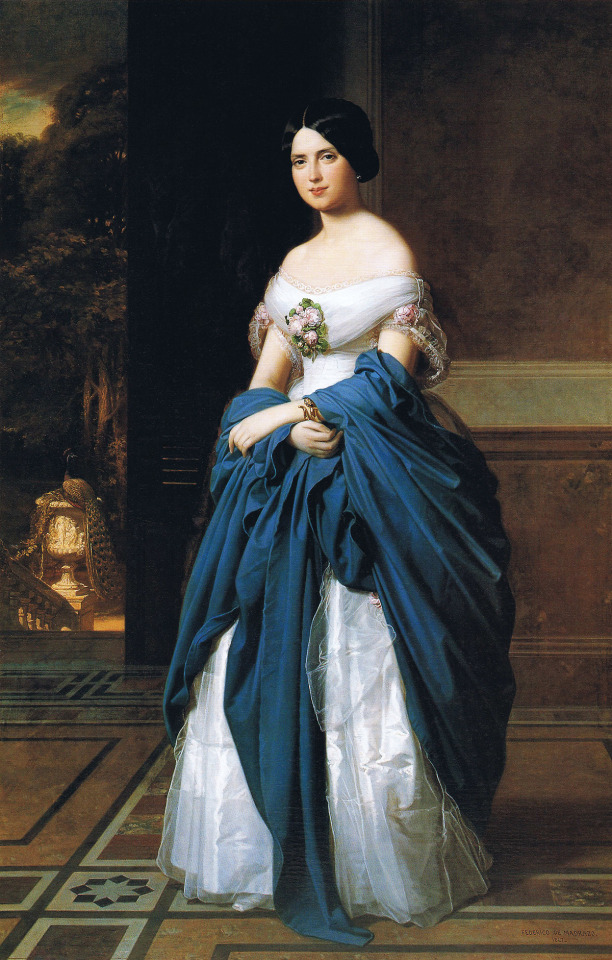
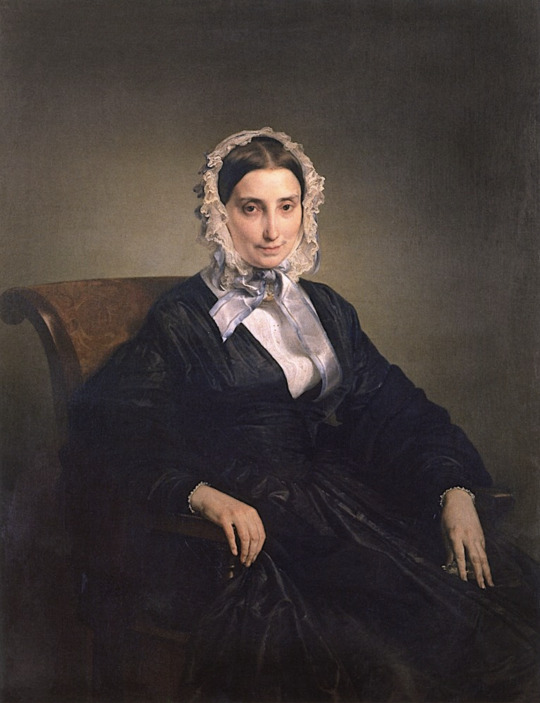
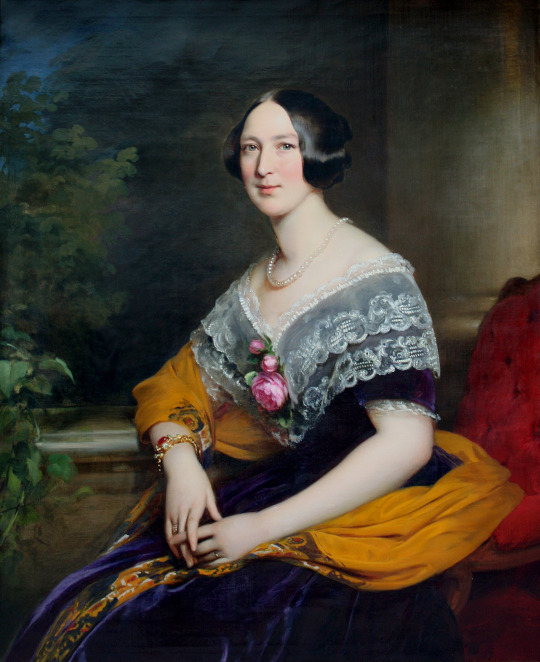
It’s 1847 -
Top: 1847 Anna Pavlovna of Russia by Nicaise De Keyser (Stichting Historische Verzamelingen van het Huis Oranje-Nassau - Den Haag, Zuid-Holland, Netherlands). From Wikimedia 1684X2560 @300 1.1Mj.
Second row left: ca. 1847 Maria Antonia of the Two Sicilies by Giuseppe Bezzuoli (Galleria d'Arte Moderna - Firenze, Toscana, Italy). From Wikimedia; increased sharpness and exposure 990X1216 @72 282kj.
Second row right: ca. 1847 Lady Alexandrina Octavia Maria Vane (1823–1874), Countess of Portarlington by James Godsell Middleton (Mount Stewart - Newtownlands, County Down, Northern Ireland) From bbc.co (now artuk.org); enlarged by half 739X1200 @72 166kj.
Third row: 1847-1848 Duke Joseph von Sachsen-Altenburg family portrait by Joseph Karl Stieler (Hermitage). From Wikimedia; increased exposure 2536X2107 @96 814kj.
Fourth row left: 1847 Lola Montez by Joseph Karl Stieler (Schönheitengallerie, Schloß Nymphenburg - München, Bayern, Germany). From historyofyesterday.com/trouble-in-a-mantilla-and-dancing-slippers-15e39847166; fixed spots & edges w Pshop 1260X1551 @72 378kj.
Fourth row right: 1847 Lola Montez by Carl Buchner (location ?). From Wikimedia 850X1107 @72 429kj.
Fifth row: 1847 María Josefa Corral Suelves, Marquesa de Narros by Federico de Madazo y Kuntz (location ?). From pinterest.com/anavegamedina5/retratos-de-federico-de-madrazo-y-kuntz/; fixed spots & flaws w Pshop 1388X1859 @200 1.6Mj.
Sixth row left: 1847 Leocadia Zamora y Quezada by Federico de Madrazo y Kuntz (private collection). From Wikimedia 1200X1881 @600 1.3Mj.
Sixth row right: 1847-1848 Teresa Borri, widow of Stampa, 2nd wife of Alessandro Manzoni by Francesco Hayez (Pinacoteca Tosio Martinengo - Brescia, Lombadia, Italy). From Art Renewal Center; removed more obvious spots w Pshop 1998X2601 @144 5.1Mp.
Bottom: 1847 Princess Julia Luisa Golitsyna, née Baranov by Franz Schrotzberg (location ?). From Wikimedia; fixed larger spots & flaws w Pshop 1674X2052 @72 1.3Mj.
#1847 fashion#Louis-Phillipe fashion#early Victorian fashion#Biedermeier fashion#Queen Anna Pavlovna#Nicaise De Keyser#tiara#off shoulder V neckline#Maria Antonia of the Two Sicilies#Giuseppe Bezzuoli#Alexandrina Octavia Maria Vane#James Godsell Middleton#Gigot sleeves#Elisabeth of Saxe-Altenburg#Joseph Karl Stieler#Alexandra Iosifovna#Amelia of Württemberg#Lola Montez#Carl Buchner#María Josefa Corral Suelves#Federico de Madazo y Kuntz#Leocadia Zamora y Quezada#Teresa Borri#Francesco Hayez#Julia Luisa Golitsyna#lace bertha
12 notes
·
View notes
Photo
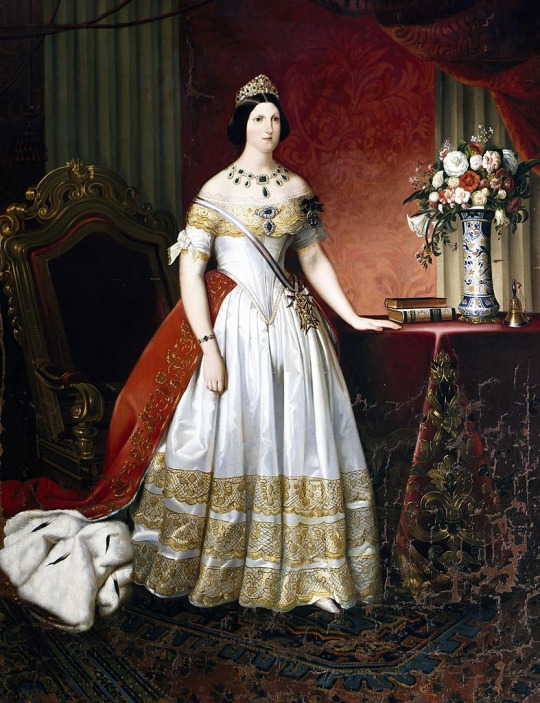
Carlo Morelli - Maria Antonia of the Two Sicilies, Grand Duchess of Tuscany
Princess Maria Antonia Giuseppa Anna of the Two Sicilies (19 December 1814 – 7 November 1898) was the Grand Duchess of Tuscany from 1833 to 1859 as the consort of Leopold II. In signature, she used Maria Antonietta.
#Maria Antonia of the Two Sicilies#House Bourbon-Two Sicilies#XIX century#Carlo Morelli#people#portrait#paintings#art#arte
1 note
·
View note
Photo

Maria Antonia of the Two Sicilies, Grand Duchess of Tuscany (19 December 1814 - 7 November 1898)
#maria antonia of the two sicilies#maria antonia anna#grand duchess of tuscany#daughter of francis i of the two sicilies#wife of leopold ii grand duke of tuscany#history#women in history#19th century#art
1 note
·
View note
Photo
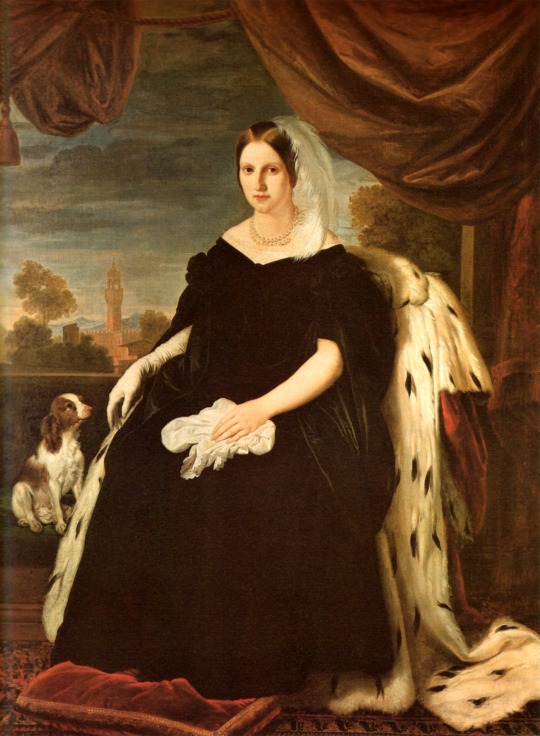
Portrait of Princess Maria Antonia of the Two Sicilies, Grand duchess of Tuscany (1836). Giuseppe Bezzuoli (Italian, 1784-1855). Oil on canvas. Galleria d'arte moderna di Firenze.
Marie Antoinette, the second wife of Grand Duke Leopoldo II of Tuscany, is depicted in her role as a sovereign, dressed in black velvet with a plume in her hair and seated on an ermine coat, a symbol of power. In the background, the belfry of the Palazzo Vecchio and the silhouette of the Duomo indicate the locale of her realm.
22 notes
·
View notes
Text
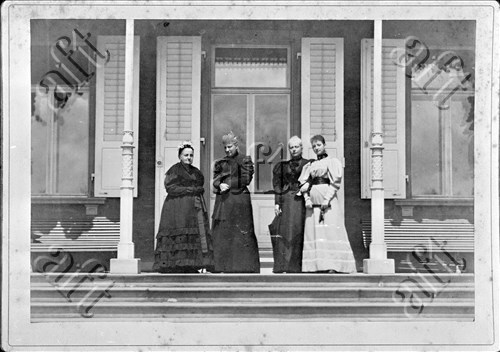
Four generations in 1890 at Villa Toscana, Lindau, Germany.
Maria Antonia Dowager Grand Duchess of Tuscany (1814-1898), Archduchess Maria Isabella Countess of Trapani (1834-1901), Princess Maria Antonietta Countess of Caserta (1851-1938) and Princess Maria Immaculata of Bourbon-Two Sicilies (1874-1947).
Source: catalogo.aft.it
Please don't remove the watermark.
#italian royal#italian royalty#tuscany#Princess Maria Immaculata of Bourbon-Two Sicilies#Princess Maria Antonietta of Bourbon-Two Sicilies#countess maria antonietta of caserta#Archduchess Maria Isabella of Austria#countess maria isabella of trapani#Princess Maria Antonia of the Two Sicilies#grand duchess maria antonia of tuscany#bourbon-two sicilies#1890#early 1890s#1890s
21 notes
·
View notes
Photo

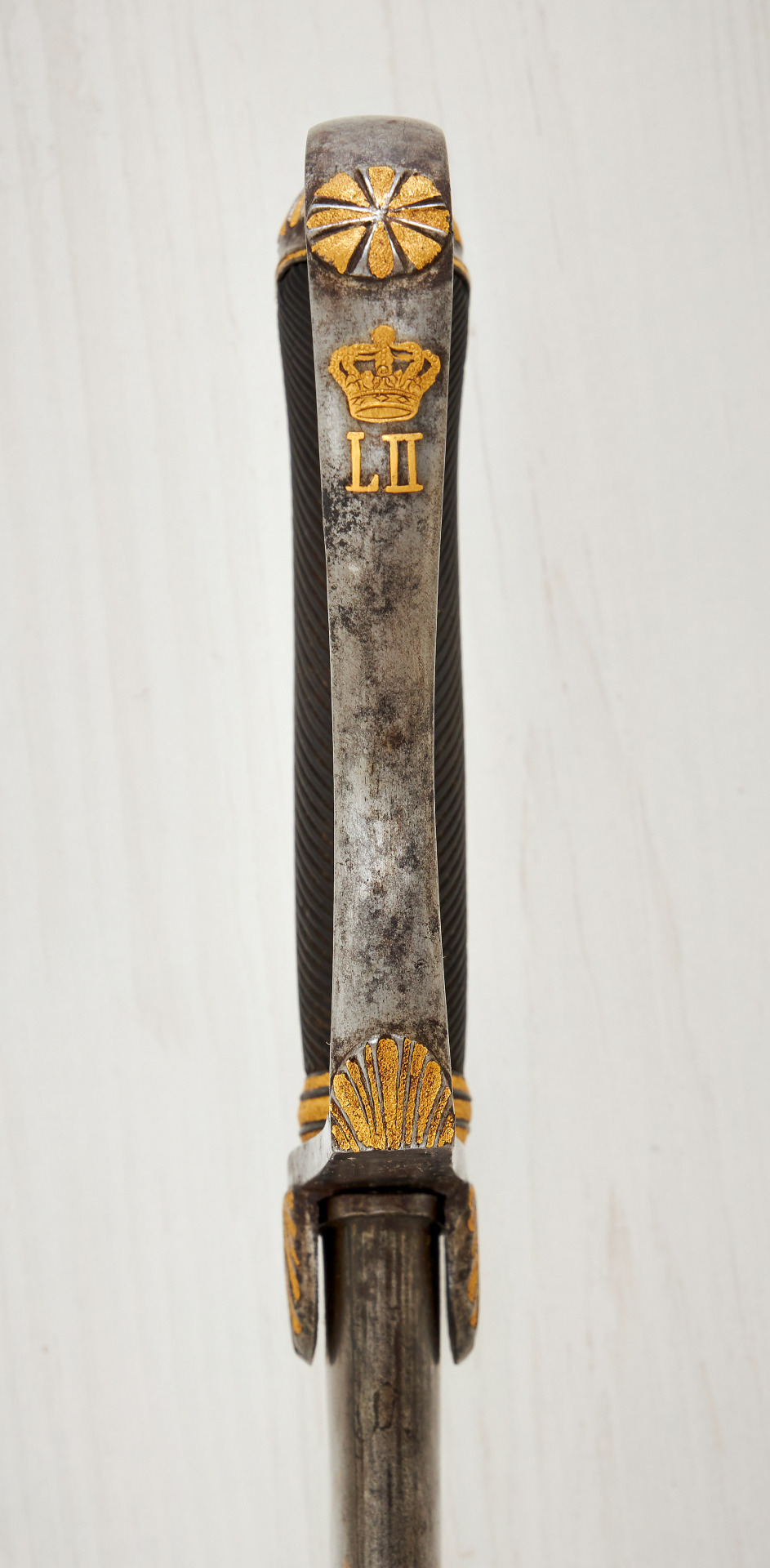
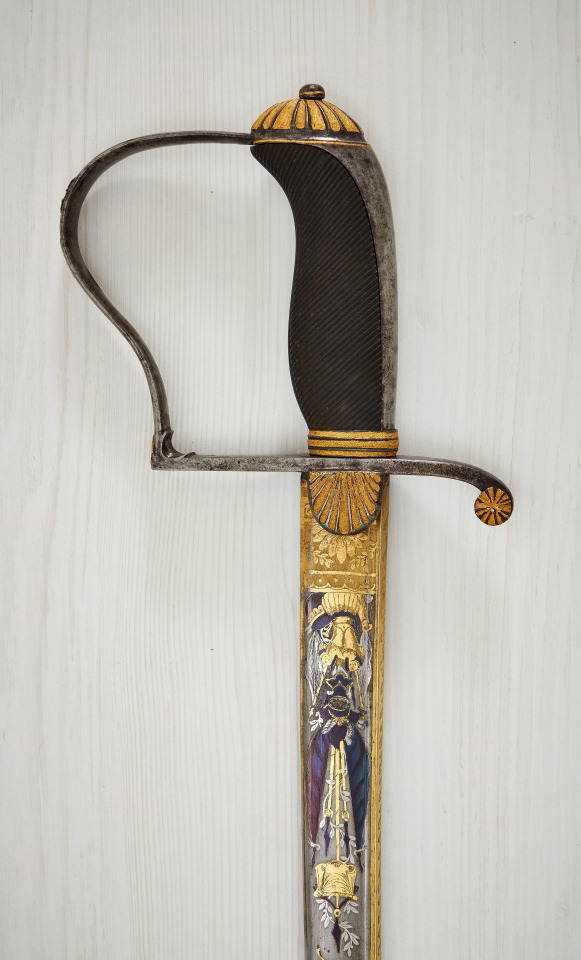

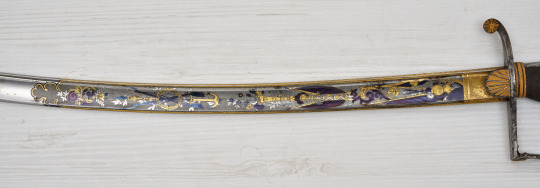
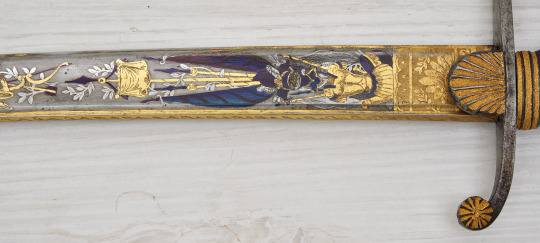
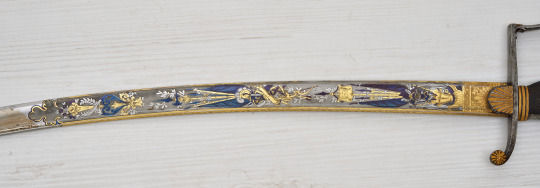
Magnificent and important Sabre of Leopold II of Habsburg-Lorraine, Grand Duke of Tuscany (1824-1859).
Iron hilt with gilt rosettes and the crowned cipher "L II" of Grand Duke Leopold II of Tuscany.
The grip of cut black ebony panels. The pommel, grip finish, and the guard of the quillons gilded.
Truly magnificent edged blade with polychrome blued and richly gilded decorative etching on both sides depicting trophies of arms, flags, crossed rifles, and rich arabesque decoration.
Iron scabbard with gilt fittings with sun symbols and the gilt inscription: "Firenze 18 Giugno 1844". On two suspension rings. Total length: 98.5 cm.
Leopold was born the second son of Grand Duke Ferdinand III and his first wife Luisa Maria of Naples-Sicily in Florence, Palazzo Pitti. Married to Princess Maria Anna of Saxony since 1817, he succeeded his late father in government on 18 June 1824. After the death of his beloved first wife Maria Anna, the Grand Duke married Princess Maria Antonia of Naples-Sicily on 7 June 1833. Maria Antonia bore ten children within eighteen years, six of whom reached adulthood, two daughters and four sons. The revolutions of 1847/1848 in the context of the Risorgimento moved him to issue a constitution on 15 February 1848. However, it was not sufficient for the radical forces in the population, who wanted to completely eliminate Austrian rule. Leopold II then left the country in February 1849 and a provisional republican government was formed, which briefly allied itself with the revolutionary Roman Republic that had existed in the Papal States for about five months at the same time. Already in April, the attempt at a republican democracy in Tuscany was crushed by a counter-revolution initiated by Austrian troops and the Grand Duke was able to return. In April 1859, a popular uprising tried to force him to join the Kingdom of Sardinia-Piedmont in the Sardinian War against Austria. As Leopold II had pledged neutrality towards Austria, he left Tuscany with his family on 27 April and abdicated on 21 July 1859 in favour of his son Ferdinand IV from his second marriage. However, Ferdinand no longer ruled the Grand Duchy, as Tuscany joined the Kingdom of Sardinia after a referendum in 1860, thus ending the rule of the House of Habsburg-Lorraine-Tuscany
Source: The Sale Room
35 notes
·
View notes
Text
MARÍA ISABEL OF SPAIN
Queen Consort of the Two Sicilies
(born 1789 - died 1848)
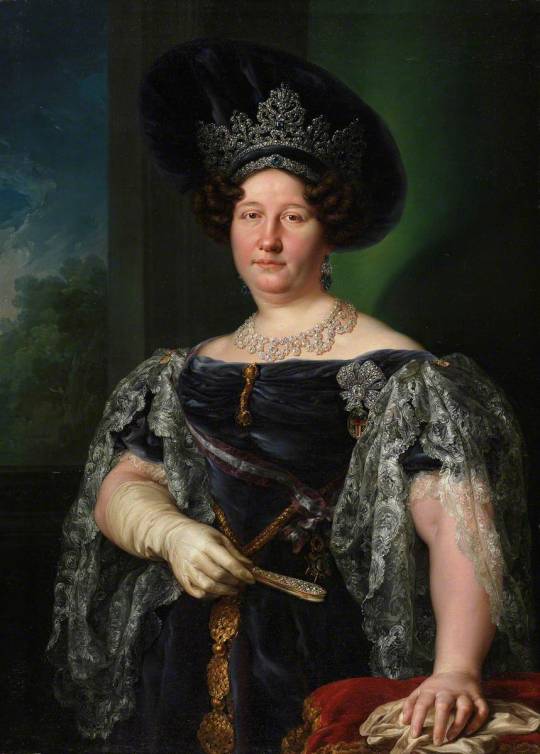
pictured above is a portrait of the Queen of the Two Sicilies, by Vicente López Portaña from 1829
-------------------- ~ -------------------- ~ --------------------
SERIES - On this day September Edition: María Isabel died on 13 September 1848.
-------------------- ~ -------------------- ~ --------------------
MARÍA ISABEL ANTONIA JOSEFA ANA TERESA FILIPINA was born in 1789, at the Royal Palace of Madrid. She was one of the youngest daughters of Carlos IV, King of Spain and Princess Maria Luisa of Parma.
Born a member of the Spanish branch of the HOUSE OF BOURBON, she was an INFANTA OF SPAIN from birth.
She was married to her first cousin FRANCESCO GENNARO GIUSEPPE SAVERIO GIOVANNI BATTISTA in 1802 and they had twelve children (check the list below). He was the Duke of Calabria as the Hereditary Prince Royal of the Kingdom of the Two Sicilies. She was 13 years old while he was already a widower aged 25 and his late wife was another first cousin of both of them, Archduchess Maria Klementine of Austria, with whom he already had two children.
Her new mother-in-law Archduchess Maria Karolina of Austria opposed to the wedding because Spain was allied to the French Republic, against the Austrian/British/Naples alliance.
After her wedding she became the DUCHESS OF CALABRIA and the HEREDITARY PRINCESS ROYAL CONSORT OF THE TWO SICILIES.
France had been a treat to Naples since the French Revolution. And in 1806 Napoléon I, Emperor of the French invaded Naples, deposed her father in-law Ferdinando IV, King of Naples, forced the Neapolitan Royal Family to exile in Sicily and put his own brother Joseph Bonaparte on the Neapolitan throne as Giuseppe, King of Naples.
Less then two years later Emperor Napoléon I also deposed her brother Fernando VII, King of Spain. Joseph Bonaparte was then removed from the Neapolitan throne and became José I, King of Spain. And in Naples the Emperor placed his brother-in-law Joachim Murat as Gioachinno, King of Naples.
The Neapolitan Royals fought against France but continued to be exiled in Sicily until they were allowed to return to Naples in 1815, after Napoléon's defeat and exile.
In 1816 her father-in-law was fully restored to the throne of Naples by the Congress of Vienna and by the end of the year the Kingdoms of Naples and Sicily were unified, creating the Kingdom of the Two-Sicilies. And her father-in-law became Ferdinand I, King of the Two Sicilies.
By 1825 her father-in-law died and husband succeeded as Francesco I, King of the Two Sicilies and she became the QUEEN CONSORT OF THE TWO SICILIES.
Six years later, in 1830, her husband died and was succeeded by their son as King Ferdinando II. And aged only 36, the QUEEN MOTHER OF THE TWO SICILIES soon engaged in love affairs.
Later in life she expressed the desire to remarry and her son, the King, agreed but make a list of possible suitors. She chose a younger Neapolitan general, FRANCESCO and married him privately in 1839. He was one of the sons of Nicola of Balzo, 3rd Duke of Presenzano and Caterina Crivelli and was created Count of Balzo. So she also became the COUNTESS OF BALZO. And do do her age they did not have any children.
Nine years after her second marriage, in 1848, the Queen Mother of the Two Sicilies died aged 59, at the Palace of Portici in Naples.
-------------------- ~ -------------------- ~ --------------------
Check my post about MARÍA ISABEL's children and their Royal Weddings!
MARÍA ISABEL and her first husband FRANCESCO I had twelve children...
Princess Luisa Carlotta of the Two Sicilies - wife of Infante Francisco de Paula of Spain;
Princess Maria Cristina of the Two Sicilies - wife first of Fernando VII, King of Spain and second of Agustín Fernando Muñoz and Sánchez, 1st Duke of Riánsares;
Ferdinando II, King of the Two Sicilies - husband first of Princess Maria Cristina of Sardinia and second of Archduchess Maria Theresia of Austria;
Carlo Ferdinando, Prince of Capua - husband of Penelope Smyth;
Leopoldo, Count of Syracuse - husband of Princess Maria Vittoria of Savoy;
Princess Maria Antonia of the Two Sicilies - wife of Leopoldo II, Grand Duke of Tuscany;
Antonio, Count of Lecce - unmarried;
Princess Maria Amalia of the Two Sicilies - wife of Infante Sebastián of Spain and Portugal;
Princess Maria Carolina of the Two Sicilies - wife of Carlos Luis, Count of Montemolín;
Princess Teresa Cristina of the Two Sicilies - wife of Pedro II, Emperor of Brazil;
Luigi, Count of Aquila - husband of Princess Januária of Brazil; and
Francesco, Count of Trapani - husband of Princess Maria Isabella of Tuscany.
-------------------- ~ -------------------- ~ --------------------
Two of her granddaughters named Isabel were supposed to become Monarchs in their own rights:
in 1883 Isabel II, Princess of Asturias succeeded as Isabel II, Queen of Spain; but
in 1889 Isabel, Princess Imperial of Brazil lost her rights of succession after the Monarchy was abolished in Brazil.
#maria isabel of spain#infanta of spain#infanta de espana#queen of the two sicilies#two sicilies#house of bourbon#bourbon#spanish royals#spanish royal family#royals#royalty#monarchies#monarchy#royal history#spanish history#european history#world history#history#history lover#18th century#19th century#napoleon i#napoleonic era#napoleonic wars#charles iv#ferdinand i#history by laura
3 notes
·
View notes
Text
Master Post - Members by birth
Disclaimer: Houses that rule(d)/reside(d) in other countries but originally came from German and/or Austrian territories and/or are generally regarded as belonging to this cultural room are listed among the German & Austrian Houses.
German & Austrian Houses
House of Ascania
Princess Sophie of Anhalt-Zerbst aka Catherine the Great
House of Coburg (Cadet branch of the House of Wettin)
Princess Alice of the United Kingdom, The Grand Duchess of Hesse and by Rhine
Princess Antoinette of Saxe-Coburg-Saalfeld, Duchess of Württemberg
Princess Charlotte of Belgium, The Empress of Mexico, Archduchess of Austria
Princess Stéphanie of Belgium, Crown Princess of Austria, Hungary & Bohemia
Princess Victoria of Great Britain and Ireland, Princess Royal, The German Empress
Victoria of Saxe-Coburg-Saalfeld, The Princess of Leiningen, The Duchess of Kent
House of Griffin
Elizabeth of Pomerania, Holy Roman Empress
House of Habsburg
Archduchess Johanna of Austria, The Grand Duchess of Tuscany
Archduchess Maria Amalia of Austria, Holy Roman Empress, The Electress of Bavaria
Archduchess Maria Anna of Austria, Princess of Lorraine and Bar
Archduchess Maria Antonia of Austria, The Electress of Bavaria
Archduchess Maria Antonia “Marie Antoinette” of Austria, The Queen of France and Navarre
Archduchess Maria Leopoldine of Austria, The Empress of Brazil, Queen of Portugal & the Algarves
Maria Theresia, The Archduchess of Austria, Holy Roman Empress
Archduchess Sophie of Austria
House of Hanover (Cadet branch of the House of Welf)
Princess Sophia Dorothea of Hanover, The Queen in Prussia
Queen Victoria of the United Kingdom, Empress of India
House of Hesse
Princess Alix of Hesse and by Rhine, Empress Alexandra Feodorovna of Russia
Princess Elisabeth of Hesse and by Rhine, Grand Duchess Elizabeth Feodorovna of Russia
House of Hohenlohe-Langenburg
Princess Adelheid of Hohenlohe-Langenburg, The Duchess of Schleswig-Holstein
Princess Feodora of Hohenlohe-Langenburg, The Duchess of Saxe-Meiningen
House of Hohenstaufen
Elisabeth “Beatrix” of Swabia, The Queen of Castile, León & Galicia
Konstanze “Anna” of Hohenstaufen, The Empress of Nicaea
House of Hohenzollern
Princess Anna Amalia of Prussia
Princess Caroline of Ansbach, The Queen of Great Britain & Ireland, The Electress of Hanover
Princess Elisabeth of Brandenburg, The Duchess of Brunswick-Calenberg-Göttingen
Princess Luise of Prussia, Princess Radziwiłł
Princess Maria Eleonora of Brandenburg, The Queen of Sweden
Princess Marie of Prussia, The Queen of Bavaria
Princess Wilhelmine of Prussia, The Margravine of Brandenburg-Bayreuth
House of La Marck
Amalia of Cleves
Anne of Cleves, The Queen of England
Sybille of Cleves, The Electress of Saxony
House of Leiningen
Princess Feodora of Leiningen, The Princess of Hohenlohe-Langenburg
House of Liechtenstein
Princess Sophie of Liechtenstein, Countess Esterházy de Galantha
House of Mecklenburg
Charlotte of Mecklenburg-Strelitz, The Queen of Great Britain, Ireland & Hanover
Elisabeth of Mecklenburg-Schwerin, Princess of Brunswick-Lüneburg aka Grand Duchess Anna Leopoldovna of Russia
Friederike (Federica) of Mecklenburg-Strelitz, The Queen of Hanover
Louise of Mecklenburg-Strelitz, The Queen of Prussia
Therese of Mecklenburg-Strelitz, The Princess of Thurn and Taxis
House of Northeim
Richenza of Northeim, Holy Roman Empress
House of Oldenburg
Augusta Victoria of Schleswig-Holstein, German Empress
Princess Cecilie of Greece & Denmark, The Hereditary Grand Duchess of Hesse and by Rhine
House of Reuß
Princess Hermine Reuß of Greiz, “German Empress”
House of Thurn and Taxis
Princes Marie Auguste of Thurn and Taxis, Duchess of Württemberg
House of Welf
Adelaide of Burgundy, Holy Roman Empress, Queen of Italy
Princess Caroline of Brunswick-Wolfenbüttel, The Queen of the United Kingdom & Hanover
Elisabeth Christine of Brunswick-Wolfenbüttel, Holy Roman Empress
Elisabeth Christine of Brunswick-Wolfenbüttel-Bevern, The Queen in & of Prussia
Princess Juliane of Brunswick-Wolfenbüttel-Bevern, The Queen of Denmark and Norway
House of Wettin
Adelheid (Adelaide) of Saxe-Meiningen, The Queen of the United Kingdom and Hanover
Princess Augusta of Saxe-Weimar-Eisenach, German Empress
Princess Christina of Saxony, The Landgravine of Hesse
Princess Luise (Louise) of Saxe-Gotha-Altenburg, The Duchess of Saxe-Coburg-Saalfeld, The Countess of Pölzig and Beiersdorf
House of Wied-Neuwied
Princess Elisabeth of Wied, The Queen & Princess of Romania
House of Wittelsbach
Princess Alexandra of Bavaria
Princess Amalie Auguste of Bavaria, The Queen of Saxony
Eleonore Magdalene of Neuburg, Holy Roman Empress
Elisabeth “Sisi” in Bavaria, The Empress of Austria
Elisabeth (Isabeau) of Bavaria, The Queen of France
Princess Elisabeth Ludovika of Bavaria, The Queen of Prussia
Helene “Néné” in Bavaria, The Hereditary Princess of Thurn and Taxis
Princess Ludovika of Bavaria, The Duchess in Bavaria
Princess Maria Anna of Bavaria, The Archduchess of Inner Austria-Styria
Princess Maria Anna of Bavaria, The Queen of Saxony
Marie in Bavaria, The Queen of Two Sicilies
Baroness Marie Louise of Wallersee, Countess of Larisch
Mathilde in Bavaria, The Countess of Trani
Sophie in Bavaria, The Duchess of Alençon
Princess Sophie of Bavaria, Archduchess of Austria
House of Württemberg
Mary of Teck, The Queen of the United Kingdom & British Dominions, Empress of India
Princess Sophie of Württemberg, The Queen of the Netherlands
Minor Nobles
Anna Constantia of Brockdorff, The Imperial Countess of Cosel
Katharina von Bora, Mrs Martin Luther
Baroness Louise Lehzen
Baroness Marie “Mary” of Vetsera
Sophie Botta, The Dark Countess of Hildburghausen
Sophie of Pannwitz, Countess of Voß
Foreign Houses
House of Albret
Jeanne d’Albret, The Queen of Navarre, 1. The Duchess of Jülich-Cleves-Berg and 2. The Duchess of Vendôme
House of Aviz
Infanta Eleonor of Portugal, Holy Roman Empress
House of Bourbon
Princess Louise d’Orléans, Princess Alfons of Bavaria
Byzantine Imperial Family
Princess Eudokia Laskarina of Nicaea, The Hereditary Duchess of Austria
Irene of Byzantium, The Queen of the Germans, The Duchess of Swabia
Princess Theodora Angelina, The Duchess of Austria & Styria
Princess Theodora Komnene of Byzantium, The Duchess of Bavaria & Austria
Theophanu, Holy Roman Empress
House of Chotek
Countess Sophie Chotek of Chotkowa and Wognin, The Duchess of Hohenberg
House of Este
Maria Beatrice d’Este, The Duchess of Massa & Carrara, Archduchess of Austria
House of Jagiellon
Jadwiga (Hedwig) Jagiellon, The Electress of Brandenburg
House of Stuart
Elizabeth Stuart, The Queen of Bohemia & Electress Palatine
House of Trastámara
Queen Joanna “The Mad” of Castile, Léon & Aragon, The Duchess of Burgundy, Archduchess of Austria
House of Valois
Mary, The Duchess of Burgundy, Archduchess of Austria
Commoners
Fatima Kariman aka Maria Aurora (von) Spiegel
Helene Baltazzi, The Baroness of Vetsera
Louise Rump, Mrs Ebert
Margot Großmann, Mrs Sauerbruch
Maria Anna Mozart, The Imperial Baroness Berchthold
Maria “Mizzi” Kaspar
Ottilie Richter, Baroness of Faber
Sophie Scholl
36 notes
·
View notes
Photo

historicwomendaily celebration week: Favourite Matriarch
Maria Theresa Walburga Amalia Christina (German: Maria Theresia; 13 May 1717 – 29 November 1780) was the only female ruler of the Habsburg dominions and the last of the House of Habsburg. She was the sovereign of Austria, Hungary, Croatia, Bohemia, Transylvania, Mantua, Milan, Lodomeria and Galicia, the Austrian Netherlands, and Parma. By marriage, she was Duchess of Lorraine, Grand Duchess of Tuscany and Holy Roman Empress.
Maria Theresa and her husband, Francis I, Holy Roman Emperor, had sixteen children, including the Queen of France (Maria Antonia/Marie Antoinette), the Queen of Naples and Sicily (Maria Carolina), the Duchess of Parma (Maria Amalia) and two Holy Roman Emperors, Joseph II and Leopold II. Out of the sixteen, nine of them did not make it to adulthood. She had eleven daughters and five sons. Though she was expected to cede power to Francis and Joseph, both of whom were officially her co-rulers in Austria and Bohemia, Maria Theresa was the absolute sovereign who ruled by the counsel of her advisers. Maria Theresa promulgated financial and educational reforms, with the assistance of Count Friedrich Wilhelm von Haugwitz and Gerard van Swieten, promoted commerce and the development of agriculture, and reorganised Austria’s ramshackle military, all of which strengthened Austria’s international standing.
Pictured: Maria Theresia (Ausschnitt), Werkstatt des Martin van Meytens (1745)
#historicwomendaily#historyedit#history#maria theresa#maria theresia#18th century#women in history#kings and queens#queens#my edit
108 notes
·
View notes
Text
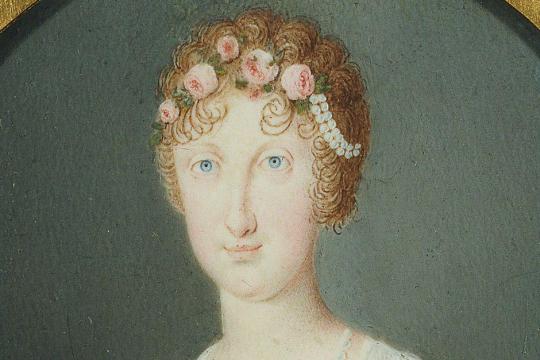
Maria Antonia of Naples and Sicily, Princess of Asturias.
#Maria Antonia of Naples and Sicily#princess of asturias#house of bourbon two sicilies#spanish royal family#long live the queue
7 notes
·
View notes
Photo



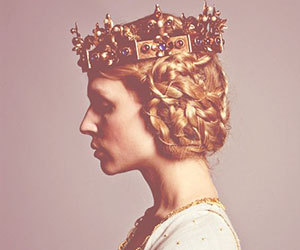

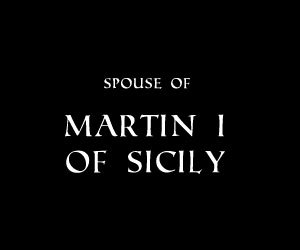




Maria was born in Catania on July 2nd 1363. Her father was Frederick III (or IV) the Simple, King of Trinacria and Duke of Athens and Neopatras. Her mother, Constance of Aragon (firstborn of Peter IV King of Aragon and his first wife Maria of Navarre) died in childbirth. After Constance’s death, Frederick married Antonia of Baux, sister of the last Latin Emperor of Constantinople James of Baux. Antonia died childless in 1374 after only two years of marriage. Frederick never remarried and when he died in 1377 his sole legitimate heir was his 14 old daughter, Maria, notwithstanding the provisions of Frederick II (III) which forbidden female heirs to succeed. In his will, Frederick III arranged that in case Maria would have died without heirs, the crown would have passed to the House of Aragon. To his bastard son William, Frederick left the islands of Malta and Gozo.
Because of her young age, but mainly since she was female, Maria wasn’t free to rule by herself. Her godfather and legal guardian, Artale I Alagona earl of Mistretta and Lord of Paternò, assumed the regency but was soon forced to form a government with three other Vicars whom belonged to the most influential families (Francesco II Ventimiglia earl of Geraci, Manfredi III Chiaramonte earl of Modica and Guglielmo Peralta earl of Caltabellotta). The main purpose of this council would have been to ensure good governance and balance between the Latin faction and the rival Catalan faction. De facto each one of the four noblemen ruled over a part of the island, while Maria was queen in name only and lived in semi-liberty in Castello Ursino in Catania, under the protection of her godfather.
When it came the time to find her a husband, Artale planned to marry the young queen to the duke of Milan, Gian Galeazzo Visconti. The Vicar’s hidden plan was to rule over all Sicily once his goddaughter would have left the island to live with her husband. Unfortunately for him, on the night of January 23rd 1379 Maria was kidnapped by Guglielmo Raimondo Moncada earl of Agosta. Moncada was supported by Peter IV of Aragon, who was against the Milanese marriage plan since he would have lost his claims over Sicily if his granddaughter were to marry the Duke Visconti. The King of Aragon took charge of the government of the Kingdom of Trinacria and sent his son Martin the Older Duke of Montblanc to Sicily to act as a Viceroy. Martin was not only Maria’s uncle, but was also her first cousin since Martin’s mother was Eleanor of Sicily, Frederick III’s older sister.
Maria was escorted to the castle of Augusta (modern-day province of Siracusa), but soon the castle was put under siege by Artale of Alagona who intended to retrieve his goddaughter. Maria was then moved to the castle of Licata. In the meantime Peter IV arranged the marriage of the queen with another one of his grandsons, Martin the Younger. The marriage contract was signed on July 24th 1380 by the King of Aragon, the groom’s father Martin the Older, Guglielmo Raimondo Moncada and Enrico Rosso earl of Aidone. Since the Artale wouldn’t give up, Maria was sent to Sardinia and later to Barcelona. In 1388 she was moved to Terrasa because at that moment Barcelona was striken by plague. Since leaving Sicily, she never lived according to her status but in isolation and tight budget. Under the regency of her grandfather, Maria lost the duchies of Athene and Neopatras. After being run by the Aragonese, in 1381 the Florentine aristocrat Nerio Acciaioli occupied Athens and in 1390 Neopatras.
In 1387 Peter IV died and was succeeded by his son John I. Like his younger brother, Martin the Older, John was the son of Peter IV and Eleanor of Sicily. In 1391 in Barcelona Maria finally married her cousin Martin, who would have ruled along with his wife as Martin I. Since the bride and groom were blood relatives, the needed a papal dispensation. The approval was granted by Antipope Clemens VII, whom the House of Aragon decided to support during the matter of the Papal Schism. In the eyes of the Sicilian nobles Martin was seen as a usurper. On July 10th 1391, the four Vicars met in the Church of St. Peter in Castronovo di Sicilia (modern-day province of Palermo) and pledged their loyalty to the queen, but rejected Martin. A similar oath was taken at the beginning of the same year in the castle of Mussomeli, property of the Chiaramonte family. They were backed by Pope Boniface IX who entrusted them of the rule of the island. The Vicars also appealed for the help of King Ladislaus of Naples and Gian Galeazzo Visconti of Milan. Surprisingly this oath was short-lived since Ventimiglia, Alagona and Peralta would later welcome with open arms the queen and her husband.
On March 22nd 1390, Maria along with her husband and father-in-law landed in the island of Favignana (near Trapani) and then proceeded to Palermo, which was conquered. Maria and Martin were finally crowned in Palermo’s Cathedral and after putting to death the rebel Andrea Chiaramonte (successor of Manfredi III), they continued their campaign to re-conquer Sicily. They freed Catania, then Messina and had to go back to Catania which was occupied once again by the rebels. Maria chose to settle in the Castello Ursino, which once had been her first gilded cage. In 1396 John I of Aragon died and Martin the Older had to go back to Spain to succeed his brother. The departure of her father-in-law stressed so much Maria to the point she fell into depression and became ill. She would be treated by many physicians (among them Josef Abenafia) and being poor of health for a whole year.
On November 17th 1398, two and half in the morning, the queen gave birth to her only son and heir. Despite his mother chose for the baby the name Frederick (after his maternal grandfather), the baby was christened as Peter, to honour King Peter IV, on April 23rd 1399. Maria’s happiness wouldn’t last long. On November 8th 1400 Peter was accidentally hit by a spear during a tournament and died, causing the queen to fall into despair.
When Catania was stricken by the plague, it was disposed to transfer Maria to a safer place. The measure proved to be ineffective since Maria caught the plague and died (alone as she had lived) in the castle of Lentini (modern-day province of Siracusa) on May 25th 1401. She was buried in Catania’s Cathedral, the same place where her mother and son rested. At the news of her death, her father-in-law ordered that every court, cathedral and city of Aragon should commemorate the late queen. After Maria’s death, her husband Martin I became the only sovereign and the year after married Blanche of Navarre.
#women#women history#historical women#history#sicily#maria of sicily#frederick iii of sicily#constance of aragon#martin i of sicily#martin ii of sicily#aragonese-spanish sicily#people of sicily#women of sicily#myedit#historyedit#house of aragon and sicily
44 notes
·
View notes
Photo

People that have marred in to Royal Families since 1800
Luxembourg
Prince Félix of Bourbon-Parma 28 September 1893 – 8 April 1970, later Prince Félix of Luxembourg
Felix was the husband of Charlotte, Grand Duchess of Luxembourg and the father of her six children, including her successor: Grand Duke Jean. He was the longest serving consort of Luxembourg.
Prince Félix was one of the 24 children of the deposed Robert I, Duke of Parma, being the duke's sixth child and third son by his second wife, Maria Antonia of Portugal.
His maternal grandparents were Miguel of Portugal and Adelaide of Löwenstein-Wertheim-Rosenberg. He was born in Schwarzau am Steinfeld He was also the younger brother (by sixteen months) of Empress Zita of Austria.
Of the twelve children of Duke Robert's first marriage to Maria-Pia of the Two Sicilies, three died as infants, six had learning difficulties, and only three married.
Despite the loss of his throne, Duke Robert and his family enjoyed considerable wealth, traveling in a private train of more than a dozen cars among his castles at Schwarzau am Steinfeld near Vienna, Villa Pianore in northwest Italy, and the magnificent Château de Chambord in France.
Less than four months after Robert's death in 1907 the Grand Marshal of the Austrian Court declared six of the children of his first marriage legally incompetent, at the behest of Duchess Maria Antonia. Nonetheless, Robert's primary heir was Elias, Duke of Parma,, the youngest son of the first marriage and the only one to father children of his own. Duke Elias also became the legal guardian of his six elder siblings.
Although Félix's elder brothers, Prince Sixte and Prince Xavier, eventually sued their half-brother Duke Elias to obtain a greater share of the ducal fortune, they lost in the French courts, leaving Prince Félix with modest prospects. Félix served in the Austrian Dragoons as lieutenant and captain, but resigned his commission in November 1918.
On 6 November 1919 in Luxembourg, the prince married his first cousin Grand Duchess Charlotte of Luxembourg, having been admitted to the nobility of Luxembourg and also made Prince of Luxembourg by Grand Ducal decree the day before.
Unlike some European consorts, Félix neither adopted his wife's dynastic surname (of Nassau), nor relinquished his own title and name "Prince of Bourbon-Parma". His traditional style as a Bourbon prince of the Parmesan branch is the reason that cadet members of the Grand Ducal Family of Luxembourg enjoy the style of Royal Highness (but that style belongs to the Luxembourg monarch and heir apparent by right, as the historical prerogative of grand ducal dynasties).
He and his wife went on to have six children
Felix was president of the Luxembourg Red Cross between 1923 and 1932 and again between 1947 and 1969. He was also Colonel of the Luxembourg Volunteers Company since 1920 and Inspector-General of the Luxembourg Army between 1945 and 1967.
Urban legend has it that Félix lost the Grünewald, a forest owned by the Grand Duchess, at a casino in 1934, but this is false; part of the property was sold, along with Berg Castle, to the Luxembourgian government, with the revenue paying for the upkeep of the grand-ducal household, and was not spent on personal consumption, let alone gambling losses.
Prince Félix died at Fischbach Castle on April 8, 1970. His funeral mass was held at the Cathedral of Notre-Dame and he was later buried in the Royal Crypt.
15 notes
·
View notes
Photo

Maria Antonia of Naples and Sicily (14 December 1784 – 21 May 1806), was the youngest daughter of Ferdinand, King of Naples and Sicily, and Maria Carolina of Austria. As the wife of the future Ferdinand VII of Spain, then heir apparent to the Spanish throne, she held the title of Princess of Asturias.
#Maria Antonia of Naples and Sicily#House Bourbon-Two Sicilies#XVIII century#people#portrait#paintings#art#arte
2 notes
·
View notes
Text
King Felipe VI of Spain and Archduchess Isabella’s relations
King Felipe and Isabella are double fourth cousins once removed from King Christian IX of Denmark through his children Thrya and son George of Greece , fourth cousins once removed from King Ferdinand II of the Two Sicilies, sixth cousin and sixth cousins once removed from Francis, Duke of Saxe Coburg Salfield, sixth cousins once removed from Leopold II, Holy Roman Emperor, seventh cousins once removed from Philip, Duke of Parma, and eighth cousins once removed as the descendant of Philip V of Spain.
King Christian IX of Denmark
King Felipe:
Christian IX -> George I of Greece -> Constantine I of Greece -> Paul I of Greece -> Queen Sofia of Spain -> King Felipe
Christian IX -> Princess Thyra of Denmark -> Ernest Augustus, Duke of Brunswick -> Queen Frederica of Greece -> Queen Sofia of Spain -> King Felipe
Archduchess Isabella:
Christian IX of Denmark -> Frederick VIII of Denmark -> Princess Ingeborg of Denmark -> Queen Astrid -> Josephine Charlotte, Grand Duchess of Luxembourg -> Archduchess Marie Astrid of Austria -> Archduchess Isabella of Austria
King Ferdinand II of Bourbon-Two Sicilies
King Felipe:
King Ferdinand II -> Prince Alfonso, Count of Caserta -> Prince Carlos of Bourbon-Two Sicilies -> Princess Maria of Bourbon-Two Sicilies, Countess of Barcelona -> King Juan Carlos of Spain -> King Felipe
Archduchess Isabella:
King Ferdinand II -> Princess Maria Annunciata of Bourbon-Two Sicilies -> Archduke Otto Franz of Austria -> Charles I of Austria -> Archduke Carl Ludwig of Austria -> Archduke Carl Christian of Austria -> Archduchess Isabella
Francis, Duke of Saxe-Coburg-Saalfeld
King Felipe:
Francis, Duke of Saxe-Coburg-Saalfeld -> Victoria, Duchess of Kent -> Queen Victoria -> Princess Beatrice -> Queen Victoria Eugenie of Spain -> Infante Juan, Count of Barcelona -> King Juan Carlos of Spain -> King Felipe
Francis, Duke of Saxe-Coburg-Salfeed-> Victoria, Duchess of Kent -> Queen Victoria -> Empress Frederich-> Sophia of Prussia, Queen of Greece -> King Paul of Greece -> Queen Sofia of Spain -> King Felipe
Francis, Duke of Saxe-Coburg-Salfeed-> Victoria, Duchess of Kent -> Queen Victoria -> Empress Frederich-> Kaiser Wilhelm II -> Victoria Louise of Prussia -> Queen Frederica of Greece -> Queen Sofia of Spain -> King Felipe
Archduchess Isabella:
Francis, Duke of Saxe-Coburg-Saalfeld -> Leopold I of Belgium -> Prince Philippe, Count of Flanders -> Albert I of Belgium -> Leopold III of Belgium -> Josephine Charlotte of Belgium, Grand Duchess of Luxembourg -> Archduchess Marie Astrid of Austria -> Archduchess Isabella of Austria
Leopold II, Holy Roman Emperor
King Felipe:
Leopold II, Holy Roman Emperor -> Archduke Charles, Duke of Teschen -> Archduke Karl Ferdinand of Austria -> Archduchess Maria Christina of Austria, Queen of Spain -> King Alfonso XIII of Spain -> Infante Juan, Count of Barcelona -> King Juan Carlos of Spain -> King Felipe
Archduchess Isabella
Leopold II, Holy Roman Emperor -> Francis II, Holy Roman Emperor -> Archduke Franz Karl of Austria -> Archduke Karl Ludwig -> Archduke Karl Ludwig of Austria -> Archduke Otto Franz of Austria -> Emperor Charles I of Austria -> Archduke Carl Ludwig of Austria -> Archduke Carl Christian of Austria -> Archduchess Isabella of Austria
Philip, Duke of Parma
King Felipe:
Philip, Duke of Parma -> Maria Luis, Queen of Spain -> Infante Francisco de Paula of Spain -> Infante Francisco de Asis of Spain -> Alfonso XII of Spain -> Alfonso XIII of Spain -> King Alfonso XIII of Spain -> Infante Juan, Count of Barcelona -> King Juan Carlos of Spain -> King Felipe
Isabella:
Philip, Duke of Parma -> Ferdinand, Duke of Parma -> King Louis I of Eturia -> Charles II, Duke of Parma -> Charles III, Duke of Parma -> Robert I, Duke of Parma -> Felix of Bourbon-Parma -> Jean, Grand Duke of Luxembourg -> Archduchess Marie Astrid of Luxembourg -> Archduchess Isabella
Philip, Duke of Parma -> Ferdinand, Duke of Parma -> King Louis I of Eturia -> Charles II, Duke of Parma -> Charles III, Duke of Parma -> Robert I, Duke of Parma -> Empress Zita -> Archduke Carl Ludwig of Austria -> Archduke Carl Christian -> Archduchess Isabella
Philip V of Spain
King Felipe:
King Philip V of Spain -> King Charles III of Spain -> King Charles IV of Spain -> Infante Francisco de Asis of Spain -> Alfonso XII of Spain -> Alfonso XIII of Spain -> King Alfonso XIII of Spain -> Infante Juan, Count of Barcelona -> King Juan Carlos of Spain -> King Felipe
Archduchess Isabella:
King Philip V of Spain -> Maria Antonia of Spain, Queen of Sardinia -> King Victor Emmanuel I of Sardinia -> Princess Maria Teresa of Savoy -> Charles III, Duke of Parma -> Robert I, Duke of Parma -> Felix of Bourbon-Parma -> Jean, Grand Duke of Luxembourg -> Archduchess Marie Astrid of Luxembourg -> Archduchess Isabella
King Philip V of Spain -> Maria Antonia of Spain, Queen of Sardinia -> King Victor Emmanuel I of Sardinia -> Princess Maria Teresa of Savoy -> Charles III, Duke of Parma -> Robert I, Duke of Parma -> Empress Zita -> Archduke Carl Ludwig of Austria -> Archduke Carl Christian -> Archduchess Isabella
2 notes
·
View notes